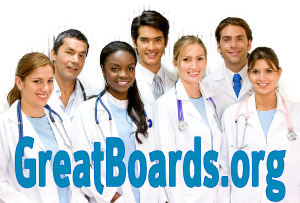The most common question I get from potential clients is, “What is the best use of your service?”
It’s an excellent question and one I love answering.
Without a doubt, my ideal client uses us to make money – preferably a lot of it. If we are generating a financial return for them, I know we have a good relationship. As you may suspect, it’s not for selfless reasons… during tough economic times such as these, when fat is being trimmed off the budget, if our service pays for itself, I know that’s one expense that gladly stays on the books.
That being said, here are my top 10 suggested uses of our service – you’ll notice that most of them contribute directly to your bottom-line:
- Have us find and qualify leads for your business
Let us know what your ideal lead looks like in terms of demographic information, industry, or any other definable parameter and then turn us loose. We can pass the leads on to you or we can pre qualify them with a phone call or email and then schedule a phone meeting with you.
- Have us create a marketing analysis
Over time, we small business owner’s become blind to our marketing and set in our ways. We may overlook important opportunities or be leaving massive blank spots in the mind of our prospects. Let us work up a marketing analysis of your business to identify weak spots, untapped opportunity, and help you execute any changes you like.
- Have us execute a social media campaign for your business
Social media websites have added a rich, complex layer to existing marketing channels. It’s a powerful tool but, boy, is it time-consuming. By the time you’ve written a blog post, updated Twitter, and connected with a few people on Facebook and LinkedIN, the day is half gone! Most people simply don’t have the time to effectively leverage social media leaving money on the table every day. Let us manage your social media while you reap the benefits.
- Utilize business process outsourcing to free up your time
If there is a repetitive task in your business that can be documented, why on earth are you still doing it? If it meets those criteria, it is recurring and process-oriented, it is nothing more than an obvious waste of your time – time you could be spending on exploiting opportunities and growing your business… or just relaxing.
- Have us find new advertising opportunities
Once you have effective lead capture systems and stellar marketing material in place, ad placements become the catalyst for business growth. Finding targeted advertising opportunities becomes the key to reaching your audience and letting them know you exist and why they should be doing business with you. If your marketing converts, the more money you spend on advertising, the more money you have in the bank. Let us help track down diverse, effective advertising opportunities for your business.
- Have us increase the size of your opt-in list
Opt-ins, prospects who ask to be contacted by your company with additional information, are a goldmine. Increasing the number of opt-ins becomes a key leverage point for any business. There are many, many things we can do to boost your opt-in ratio for your website from adding custom footer ads to creating free reports.
- Have us create a drip campaign or newsletter
The more you tell, the more you sell. Once someone has asked to be contacted, make sure that you regularly contact them with quality information that positions you and your company as experts in the field and fully educates them on the benefits of your product or service. We can help with writing content, formatting and design, scheduling delivery, and more.
- Have us optimize Adwords, Yahoo Search, and MSN ads
Pay per click advertising can be very cost-effective but, if mismanaged or ignored, it can also be a costly drain on money. By allowing us to consistently tweak and test your campaigns, we can increase the amount of traffic going to your site while lowering your overall cost per click and overall ad spend.
- Have us hold you accountable
Unfortunately, this is probably the most underutilized service we offer. There are few things more powerful than an accountability call with someone. You set goals that are important to you and then we follow up with you on a schedule to measure your progress and make sure that you followed through. If you hit some kind of a roadblock, we can help you overcome it. Even for the entirely self-motivated, this kind of productivity booster can generate huge returns in the form of increased productivity and execution.
- Have us create forward movement that wouldn’t otherwise happen
If you are anything like most small business owners, you’ve got a list of possible projects that is unrealistic if not absurd. Put us to work on an important business goal you know you just won’t have time to get to. See what happens. If nothing else, you’ll have a foundation to work from. More than likely, you’ll have an important result beautifully executed for your business without having to lift a finger. Something that wouldn’t have otherwise gotten done.
This list should give you an idea of the types of things I think you should have us doing. Granted, some of these may not apply to your business. That is why defining the “best use” of our service is almost impossible. What is important to you, may not be important to another.
The idea is that our service conforms to the unique needs of you and your business. Without an in depth discussion of your business needs, I can’t point out the specific things we should be doing that will help you the most.
If you’d like to have a discussion like this, where we talk about your business – where it’s at, what you are working toward, how we can help – just let me know. These are conversations I love having.
Save Time. Make More Money. Grow Your Practice. Let Golean Health take care of your office needs while you and your staff spend more time serving your patients.




 The CEO of another health system had restructured, so facility executives were directly accountable to corporate management for finances and operations. He wanted local boards to focus on strategic direction and oversight of quality, but local boards continued monthly monitoring of finances as they’d always done. Some trustees wondered what their role was.
The CEO of another health system had restructured, so facility executives were directly accountable to corporate management for finances and operations. He wanted local boards to focus on strategic direction and oversight of quality, but local boards continued monthly monitoring of finances as they’d always done. Some trustees wondered what their role was.